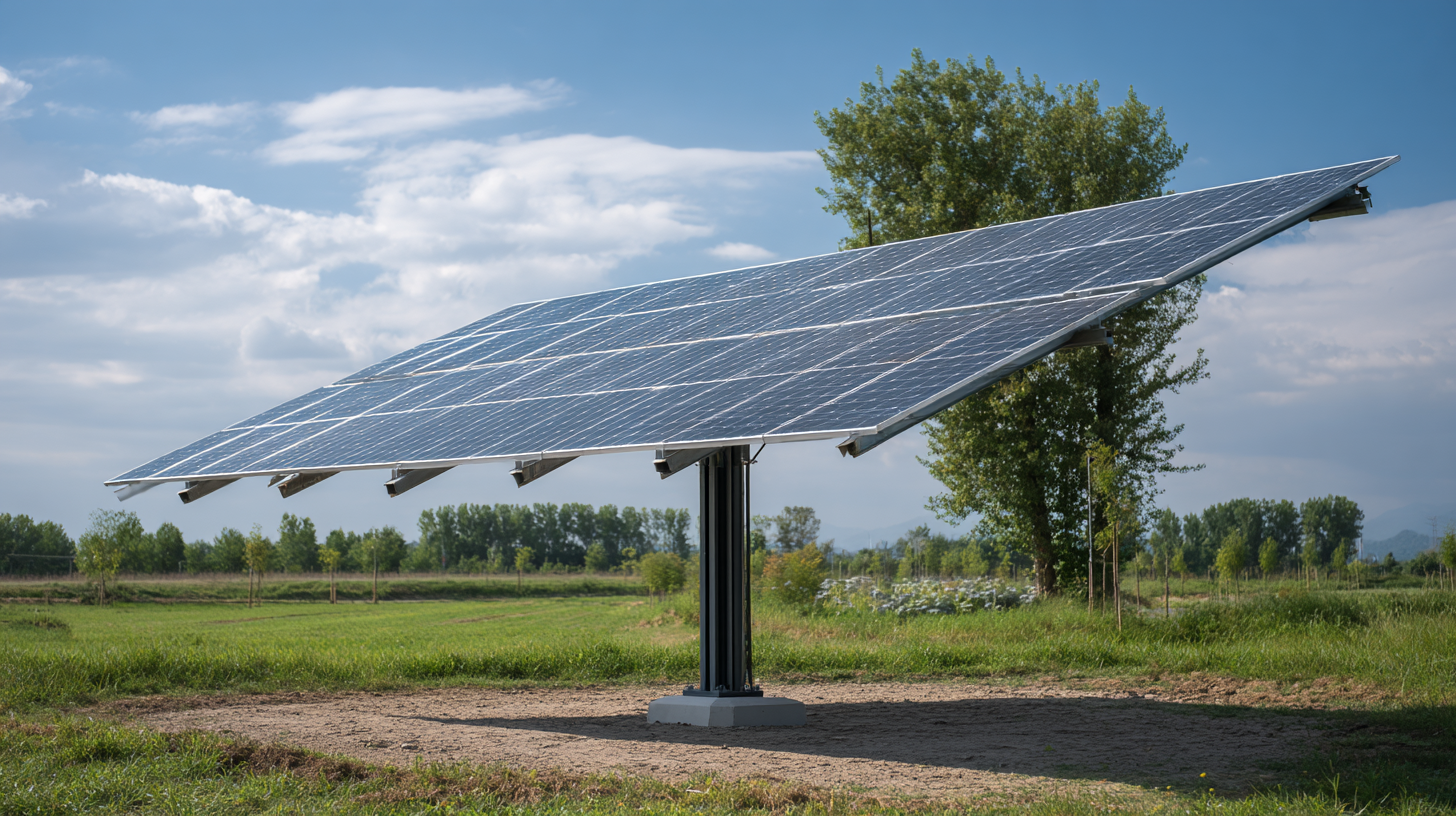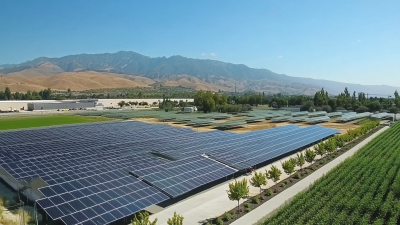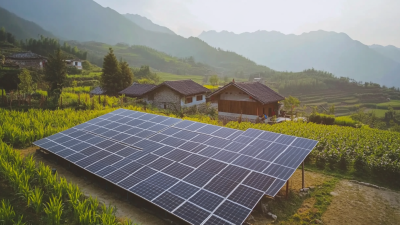Unlocking the Power of Solar Light for a Sustainable Future
The transition to sustainable energy sources is not just a necessity but a powerful opportunity, particularly in harnessing Solar Power Light. According to the International Energy Agency (IEA), solar energy could contribute to over 25% of global electricity generation by 2050, making it a cornerstone of our energy strategy. Furthermore, a report by the National Renewable Energy Laboratory (NREL) indicates that the cost of solar photovoltaic systems has decreased by approximately 89% since 2009, thus making solar energy more accessible and economically viable for widespread use. This innovative approach not only addresses energy demands but also contributes to significant reductions in carbon emissions, aligning with global sustainability goals. By unlocking the potential of Solar Power Light, we can pave the way for an energy-efficient future, ensuring that both society and the environment prosper.

Understanding Solar Light and Its Benefits for Sustainability
Solar light plays a pivotal role in promoting sustainability and addressing climate change. Unlike conventional energy sources, solar energy is renewable and abundant, harnessing the power of the sun to produce clean, eco-friendly electricity. This shift towards solar energy not only reduces greenhouse gas emissions but also lessens our dependence on fossil fuels, paving the way for a greener planet. As technology advances, the efficiency of solar panels continues to improve, allowing more households and businesses to tap into this sustainable energy source.
Moreover, solar light offers numerous benefits beyond reducing emissions. It can significantly lower energy costs, providing long-term financial savings for users. Additionally, the accessibility of solar energy can stimulate local economies by creating jobs in manufacturing, installation, and maintenance sectors. By integrating solar technology into our daily lives, we can foster energy independence, enhance energy security, and contribute to a healthier environment. Harnessing solar light is not just a trend; it's a vital step towards a sustainable future, empowering individuals and communities to take action against climate change.
Unlocking the Power of Solar Light for a Sustainable Future
This chart illustrates the growth of solar energy adoption and its impact on carbon emissions reduction over the years. The data reflects the increasing trend in solar energy capacity and its benefits for sustainability.
Exploring Innovative Solar Technologies for Everyday Use
The global shift towards renewable energy is increasingly reflected in the innovation of solar technologies, with transparent solar panels gaining significant attention. As the market for transparent solar cells is projected to reach $89.88 million by 2032, advancing at a compound annual growth rate of 18.40%, these technologies are poised to revolutionize everyday applications. By integrating solar-generating capabilities into windows and other surfaces, urban areas can harness the sun's energy without sacrificing aesthetics or functionality.
In tandem with technological advancements, ambitious initiatives are being undertaken globally to mitigate carbon emissions. The Mohammed Bin Rashid Al Maktoum Solar Park in Dubai exemplifies such efforts, aiming to reduce carbon emissions by 65,000 tons annually as part of the city’s broader sustainability strategies. The Dubai Carbon Reduction Strategy and the 2021 Dubai Plan highlight the region's commitment to achieving a 16% reduction in carbon emissions by 2021. This dedication to renewable energy not only enhances the region's ecological footprint but also paves the way for future innovations in solar technology, ensuring that sustainable practices become an integral part of daily life.

Practical Steps to Integrate Solar Energy into Your Home
Integrating solar energy into your home is not only a step toward sustainability but also a pathway to reducing your energy costs and increasing resilience against rising utility prices. One of the practical approaches is to install photovoltaic (PV) systems on rooftops or within your property. These systems harness sunlight to generate electricity, which can power your home and reduce reliance on conventional energy sources. Recent advancements indicate that innovations, such as building-integrated photovoltaics (BIPV), are making it easier for homeowners to integrate solar technology seamlessly into their living spaces, combining aesthetics with functionality.
Additionally, homeowners can explore solar-powered solutions for specific needs like electric vehicle charging stations. This not only helps in managing energy consumption more efficiently, but also aligns with the growing trend of sustainable living. As ongoing research reveals, effective control strategies for managing reactive power in grid-connected PV systems can optimize energy usage under varying solar conditions, ensuring that your home remains a hub of efficiency. As technologies advance, incorporating solar solutions can significantly enhance your home's energy independence while contributing to environmental sustainability.
Unlocking the Power of Solar Light for a Sustainable Future - Practical Steps to Integrate Solar Energy into Your Home
| Dimension | Value |
|---|---|
| Average Solar Panel Efficiency | 15%-22% |
| System Installation Cost per Watt | $2.50 - $3.50 |
| Payback Period | 5 - 7 years |
| Average Annual Savings | $1,000 - $2,000 |
| Carbon Footprint Reduction | 1.5 - 2 tons/year |
| Average Solar Installation Size | 5 kW |
| Incentives Available | Federal Tax Credit, State Rebates |
Maximizing Energy Efficiency with Solar-Powered Solutions
Solar-powered solutions play a crucial role in maximizing energy efficiency in today's world. By harnessing the abundant energy provided by the sun, we can significantly reduce our reliance on fossil fuels and decrease greenhouse gas emissions. Innovative technologies, such as solar panels and solar thermal systems, are designed to convert sunlight into sustainable energy, making them essential in various sectors, including residential, commercial, and industrial applications. These systems not only generate clean power but also enhance energy savings through improved efficiency and reduced utility costs.
Incorporating solar energy into our daily lives fosters a culture of sustainability and energy conservation. Smart homes equipped with solar-powered devices, such as energy-efficient lighting systems and smart thermostats, optimize energy usage, resulting in lower carbon footprints while providing significant savings on energy bills. As the technology continues to evolve and become more accessible, communities worldwide can cultivate a greener environment by investing in solar solutions. This shift not only contributes to lowering overall energy consumption but also paves the way for a future where renewable energy sources become the cornerstone of our energy infrastructure.
Advocating for Policy Changes to Support Solar Energy Adoption
The transition to solar energy is critical for combatting climate change and building a sustainable future. As advocates for policy changes to support solar energy adoption, we must recognize the pivotal role that state governments play in leading this effort. Policymakers can create frameworks that incentivize rooftop solar installations, making it easier for homeowners, schools, and businesses to harness the power of the sun. Enhanced regulations can also ensure that the benefits of solar energy reach underserved communities, helping to alleviate energy burdens and promoting equity in access to clean energy.
Recent developments, such as the overhaul of California’s rooftop solar regulations, highlight the ongoing debates surrounding solar energy incentives. While the intention is to balance the interests of utilities and consumers, it is crucial that these changes do not undermine the momentum for solar adoption. Advocacy for supportive policies should continue, emphasizing the need for robust incentives that enable widespread adoption while protecting the most vulnerable populations. Moving forward, it’s essential to create a landscape where solar energy can thrive, offering a comprehensive path toward a resilient and sustainable energy future.

Related Posts
-

Global Market Insights: The Future of Light Solar Solutions in 2025
-

2025 Solar Technology Innovations: Essential Considerations for Global Buyers
-

Exploring the Technical Specs of Solar Power Solutions and Their Installation Guide
-

Advancements in Solar Technology Setting New Industry Production Standards
-

Unlock the Potential of Solar With Light Innovations for Sustainable Global Sourcing
-

7 Effective Strategies to Maximize Light Solar Product Sourcing